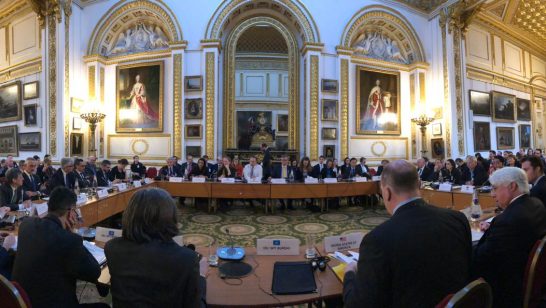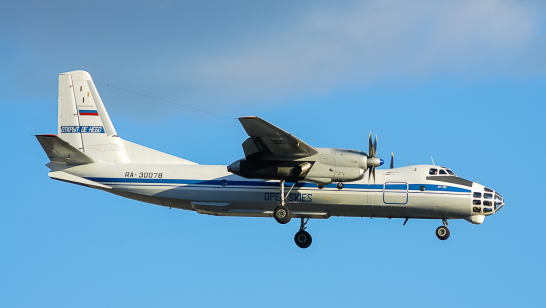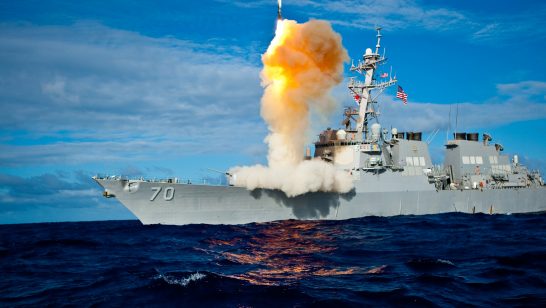
“When we first launched the report in early December, Russian forces were massing on the borders of Ukraine. As I write this, just weeks later, a full-blown crisis has developed between nuclear Russia and nuclear NATO. This report has only gained in relevance since its release, as we need nuclear arms control more than ever.
Senior Russians have compared this to the Cuban Missile Crisis and have spoken, as has the NATO Secretary General, of the possibility of large-scale conflict in Europe. These are real dangers, but there are also real opportunities to re-start nuclear arms control. This crisis lends momentum to the long haul rebuilding of US, British, French and NATO muscle memory for nuclear risk reduction. Under the skilful steering of Nevine Scheper and Oliver Thraenert of the Centre for Security Studies in Zurich, I and my fellow authors have offered a long-term, clear-eyed look at what it is going to take for the transatlantic community to do nuclear arms control effectively. This summary couldn’t be more timely.”
Adam Thomson, Director of the ELN
***
Nuclear arms control has lost its place in the current security landscape. A revival of arms control, which is urgently needed, will not be possible by going back to old approaches. Instead, arms control needs to adapt to new circumstances. Western experts have devoted a great deal of attention to possible further steps on the reductions pathway, such as a follow-on agreement to the New START Treaty or a new agreement on non-strategic nuclear weapons and their delivery systems. In the meantime, far too little attention has been given to the new deterrence landscape or the political strategy that must be put in place to arrive at a point where new arms control approaches fit that landscape.
A new report, published by the Center for Security Studies (CSS) at ETH Zurich, sets out a transatlantic approach on how to build such a political strategy for arms control. It is not about specific arms control solutions; rather, it is about the political strategy that is needed to get to those solutions and focuses on nuclear arms control as it still seems to be the most consequential path to significant risk reduction.
Today’s international security context is increasingly tense and complex, characterised by growing competition – notably among the US, Russia, and China, including at the strategic nuclear level – and driven by technological advances. The nuclear arms control architecture established during the Cold War, which provided some degree of predictability and served to manage the competition between Washington and Moscow, has receded into history, having been found wanting in a changed security environment. In this new context, the engagement necessary for arms control is missing. Politically, the nuclear powers are constantly below the thresholds of either the alarm or the hope that might spur arms control action, while mistrust and misperceptions are widespread.
Legally binding arms control measures that provide restraint, transparency, and predictability will be difficult to agree on and implement effectively. It might be more feasible and necessary to focus more on behaviours than capabilities, determine actual sources of instability, and discuss pathways to prevent unintended escalation scenarios. Hence, arms control needs to adapt substantively to today’s geopolitical and technological realities, characterised by changed strategic military relationships where the nuclear element is but one piece of the larger puzzle,and the atrophying of the institutions, skill sets and human capital for doing arms control over the long haul must be reversed.
Arms control strategy must also adapt to the changed and changing political strategies of the main actors. During the Cold War, arms control was possible in part because it played a prominent role in the West’s overarching political strategy of containment and deterrence stability. Its role in contemporary strategy is less clear, in part because it is still taking shape, as the requirements of long-term strategic competition begin to come into focus. Today, policymakers in the West are in pursuit of both viable long-term strategies for an era of strategic competition and a logic for arms control that supports them.
A political strategy for arms control should be based on the following building blocks:
- Think of the adaptation of nuclear arms control as a long-term project
- Renew and diversify leadership
- Rebuild institutions and human capital
- Enhance and expand strategic dialogues
- Understand that arms control requires compromise
- Re-calibrate the public discourse
- Focus on the reduction of nuclear dangers, not just nuclear arsenals
- While pursuing transparency, predictability and adversary restraint, do not erode deterrence
- Prepare for arms control success but do not assume it
Strategic forms of restraint and the implementation of formal and informal mechanisms are more likely to succeed if the United States and its allies work in close partnership. There are many reasons for this, notably the fact that the US and Europe have shared security interests, shared values and ingrained habits of cooperation. The following guidelines can help support the development of a transatlantic political strategy for nuclear arms control.
Guidelines for Europe
Many European states wish to play a greater role in setting and advancing the arms control agenda, which starts by becoming a stronger partner in the transatlantic security relationship. Intellectual burden-sharing is as important as military burden-sharing. Most major European powers have the governmental and non-governmental capacity to be more active in the former and seek to strengthen the latter. Non-nuclear European powers must realize that nuclear deterrence will remain at the core of transatlantic security strategy, and invest in their capacity to engage other powers pragmatically on the requirements of deterrence.
Guidelines for the US
The Biden administration has re-affirmed the US’s commitment to a leading role in nuclear diplomacy and to close consultations with allies but more needs to be done to make good on the promise to consult. Such substantive consultations are key within the framework of the NATO Strategic Concept and the US’ own strategic review process but should also be routine among allies outside of these exercises. Washington should exercise some more empathy with its European allies by acknowledging the domestic pressure for disarmament that European leaders are facing from ban treaty advocates and civil society. This also implies engaging with views in some European states that may run counter to American views, notably on missile defence or the legacy the Trump presidency has left in Europe.
Transatlantic guidelines
A core priority should be to develop a transatlantic discourse based on a comprehensive, long-term nuclear arms control strategy. However, this discourse should take into account the transpacific dimension. The transatlantic community must have a sound grasp of the ways in which arms control in Europe might affect East Asia and the interests of US allies there and vice versa. This requires a substantially more robust dialogue on deterrence and arms control between US allies in Europe and East Asia, along with the supporting analytical engagement. Regarding Russia, a dual approach is necessary. There is a need to compete with and counter Russia’s expanding nuclear capabilities while collaborating on arms control issues where possible. This requires open communication channels, which allow for a disciplined dialogue and agile diplomacy
Read the full report here and watch the launch event held on 1 December 2021 here.
Image: A view of the situation board in an operations room at the U.S. Air ForceWeapons Controller School, National Archives Catalog.










